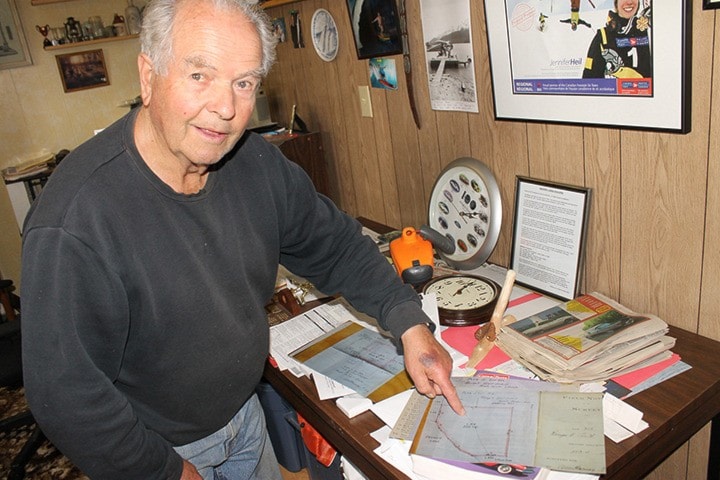Decker Lake resident Bob Saul has heard stories about the Collins Overland Telegraph line since he was a little kid.
The telegraph line, which was built in 1866, extended from north of New Westminster to as far north as Telegraph Creek on the Stikine River. The line passed directly through Decker Lake and Burns Lake.
Saul said it's important to know about this telegraph line because it represents an important part of the Burns Lake history.
The area was first settled during construction of the telegraph line. The lake and thus the village are named after Michael Byrnes, a surveyor for the Collins overland telegraph.
In 2012, Saul and a researcher from Surrey searched the area around his property with metal detectors and found pieces of wire and objects such as chains and insulators used on the telegraph line.
In Burns Lake, the telegraph trail passed near the now Lakes District Museum, extending behind the Home Hardware store and near Mulvaney's Pub.
Construction on the telegraph trail was motived by the desire to establish faster and more efficient communication between North America and Europe in the 1800s.
An attempt was made in 1864 to link the continents with underwater cable across the Atlantic, but this was not successful.
As an alternative, the Collins Overland Telegraph involved a line starting in San Francisco, running north through the United States and B.C., across Alaska to an underwater crossing of the Bering Sea and then connecting with the already constructed Russian telegraph system to link eventually with the European system.
By 1866, a 50-foot wide right-of-way had been constructed as far north as Telegraph Creek on the Stikine River.
However, in June of 1866, news came to the construction crews that another underwater cable had been laid across the Atlantic and was operating successfully.
Work on the Collins Overland Telegraph trail was then abandoned. The section north of Quesnel was forgotten and the line from Quesnel south was put into operation.
The Yukon gold rush of 1898 opened up new frontiers and brought a surge of people who soon decided they wanted a fast, efficient and year-round method of communicating with the rest of the world.
An extension of the telegraph line from Quesnel to Dawson City, Yukon, was then completed in 1901. Parts of the line stayed in operation until after the second world war, but the section north of Hazelton was closed in 1936 when a flood destroyed some of the facilities.
